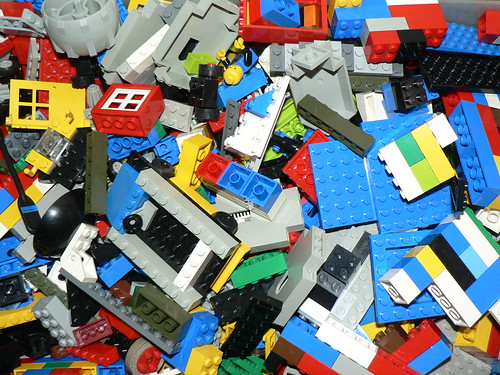
In our conversation around Jim Knight’s Unmistakable Impact, the following question has come up:
What does it look like when we provide an environment where our teachers are “energized, thrilled, and empowered by learning?”
My gut answer is to look toward kindergarten and pre-school. Our earliest, intrinsically-motivated learning comes through play. The students I got to observe briefly yesterday at Spark! pre-school were playing through their ideas of what pieces of the puzzles they were working on went where and could easily fail without worry of reprucussions from their peers or their teammates.
In his investigation of play research with Christopher Vaughan, Stuart Brown outlines what more advanced players do when they realize they could easily dominate the field – they pull back enough so that they still find the activity enjoyable and so that those people they’re playing with are not overwhelmed. The activity remains fun because those playing are doing so to play and learn, not to win. This is what I saw when I noted something not going quite right for the Spark! students. The teacher didn’t jump right in to correct, and the surrounding students offered suggestions, but didn’t feel the need to take over and show. Everyone realized playing is more fun when you get to do.
Knight sees this too, writing, “When we take the humanity out of professional learning, we ignore the complexity of any helping relationship, and we make it almost impossible for learning to occur.”
In a professional space, where the organization has an intention of moving in a certain direction, there is certainly the challenge of feeling as though completely open and free play is not an option.
To this end, I’d turn to Dewey (of course). When he spoke of creating educational experiences for students, Dewey was not advocating a completely hands-off approach such as you might find in an open school.
Dewey recognized there were certain things schools needed to do to accomplish their mission. The key in moving toward these missions is to provide experiences that build on the pasts of learners and accesses what they’re already curious about.
Teachers will be “energized, thrilled, and empowered by learning” when there is space to play aligned with institutional goals and driven by their personal learning experiences and curiosity.
The trouble here is finding the balance and trust necessary to remember the humanity Knight speaks of. If we can remember his “simple plans, with clear goals.” We will move in the right direction.
LEGOS work because the rules are simple and clear: Build something with the blocks by putting them together. The more restrictions we place on what you can build, the less you will be interested in learning what you can build. The more we trust you to follow the simple rules, the more likely you are to build something we’ve never seen before for the benefit of deepening our understanding of what is possible.
Flickr image via Slack pics